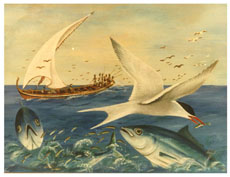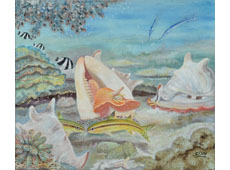Indian Prime Minister Dr Manmohan Singh pledged support at parliament yesterday for the Maldives’ democratic transition through financial assistance and bilateral initiatives for development, becoming the first foreign head of state or government to address the legislative body in its 78-year history.
The Indian Prime Minister was greeted with a ceremonial welcome in Male’ for his first official state visit after the conclusion of the 17th SAARC summit in Addu City on Friday.
“India will be at your side in your transition to a fully functioning democracy,” Singh declared at the special sitting of the People’s Majlis. “We will assist the Majlis by way of training, formulation of rules and regulations and any other assistance that you may desire.”
The Speaker of the Lob Shaba, the lower house of the Indian parliament, is due to visit the Maldives, Singh noted, while the formation of India-Maldives parliamentary friendship groups “augur well for the development of relations between our two parliaments.”
Prior to his historic address before parliament, the Indian Prime Minister signed five agreements under a ‘Framework for Cooperation in Development’ with President Mohamed Nasheed after official bilateral talks at the President’s Office.
“This is a blueprint for cooperation in areas such as trade and investment, food security, fisheries development, tourism, transportation, information technology, new and renewable energy, communications and enhancing connectivity by air and sea,” Singh said in his address.
In addition to a US$40 million line of credit to construct housing units, India extended a credit facility of US$100 million to help the Maldives “meet its short-term budgetary needs” and import essential commodities.
India extended similar financial assistance in December 2008 to plug the fiscal deficit and in the following year subscribed to US$100 million in treasury bonds. The new loan is to be used to settle Rf4.76 billion in T-bill sales sold through the Maldives Monetary Authority (MMA) by April 30, 2012.
US$30 million of the credit facility was issued on October 31 by the Indian government.
As part of the aid programme, said Singh, India will undertake “a major renovation” to be completed by 2013 of the India Gandhi Memorial Hospital (IGMH) in Male’, the main referral hospital in the Maldives.
The Prime Minister noted that Indian companies were engaged in infrastructure projects in the Maldives and wished to “forge closer economic links through banking and financial institutions” and “cooperate in the modernisation of your fishing and food processing industry.”
Among the agreements signed yesterday was the inception of a regular passenger cum cargo ferry service between Cochin and Male’ and the development of a regional port in Kulhudhufushi, the main population hub of the north.
Interlinked security interests
On global warming and climate change, Singh said India understood the threat Maldives faced from rising sea levels and shared its concerns.
“I wish to state in no uncertain terms that India will stand as one with Maldives in combating global warming. Maldives’ views must be heard with respect in global councils,” he said.
“We will help Maldives to achieve its aim of becoming carbon neutral. We will help build your capacities through sharing of energy efficiency technologies and provide scholarships for students from Maldives in areas such as coastal zone adaptation and management.”
On the “extended neighbourhood” of the Indian Ocean and shared security concerns, Singh noted that “over 97 percent of India’s international trade by volume and 75 percent by value passes through the Indian Ocean.”
“The challenges we face are well known – extremism and religious fundamentalism, piracy, smuggling and drug trafficking to name a few. Maldives is additionally concerned about poaching in the coral reefs and illegal commercial fishing by foreign trawlers. We have together experienced the devastation caused by the tsunami in 2004,” Singh observed.
As part of a “multi-pronged approach” to dealing with the problems, India has pledged to support the construction of a police academy in the Maldives while agreements were signed for cooperation in combating terrorism, drug trafficking, disaster management, coastal security, and transfer of sentenced prisoners.
The Indian Prime Minister also congratulated President Nasheed and his administration for “the outstanding manner in which the [SAARC] Summit was organised,” a conference that has helped “further consolidate the process of regional integration in South Asia.”
Singh praised the “impressive strides in nation-building” the Maldives has made since independence in 1965, with the highest socio-economic indicators and progress on Millennium Development Goals in the South Asia region.
“You have chosen the path of democracy, freedom and respect for human rights. You have shown how even a small nation can stand up and be counted in the affairs of the world,” he said.
“I am confident that the people of Maldives will continue to consolidate their achievements. As an abiding friend, India will always stand by you in these efforts. Our relations are time-tested and I wish to reaffirm that they shall remain so in the future.”


